10 Best Things to Do in Saguaro National Park, Arizona
In the far south of Arizona lies Saguaro National Park, America’s first national park created primarily to protect a plant species. And rightly so—even though this is a desert area, it’s plants that run the show.
The park’s namesake, saguaro cacti dominate the landscape, which consists of desert flats and rugged mountain ranges. One of the true icons of the American West, these cacti are so abundant here that the name “saguaro forests” is not an exaggeration.
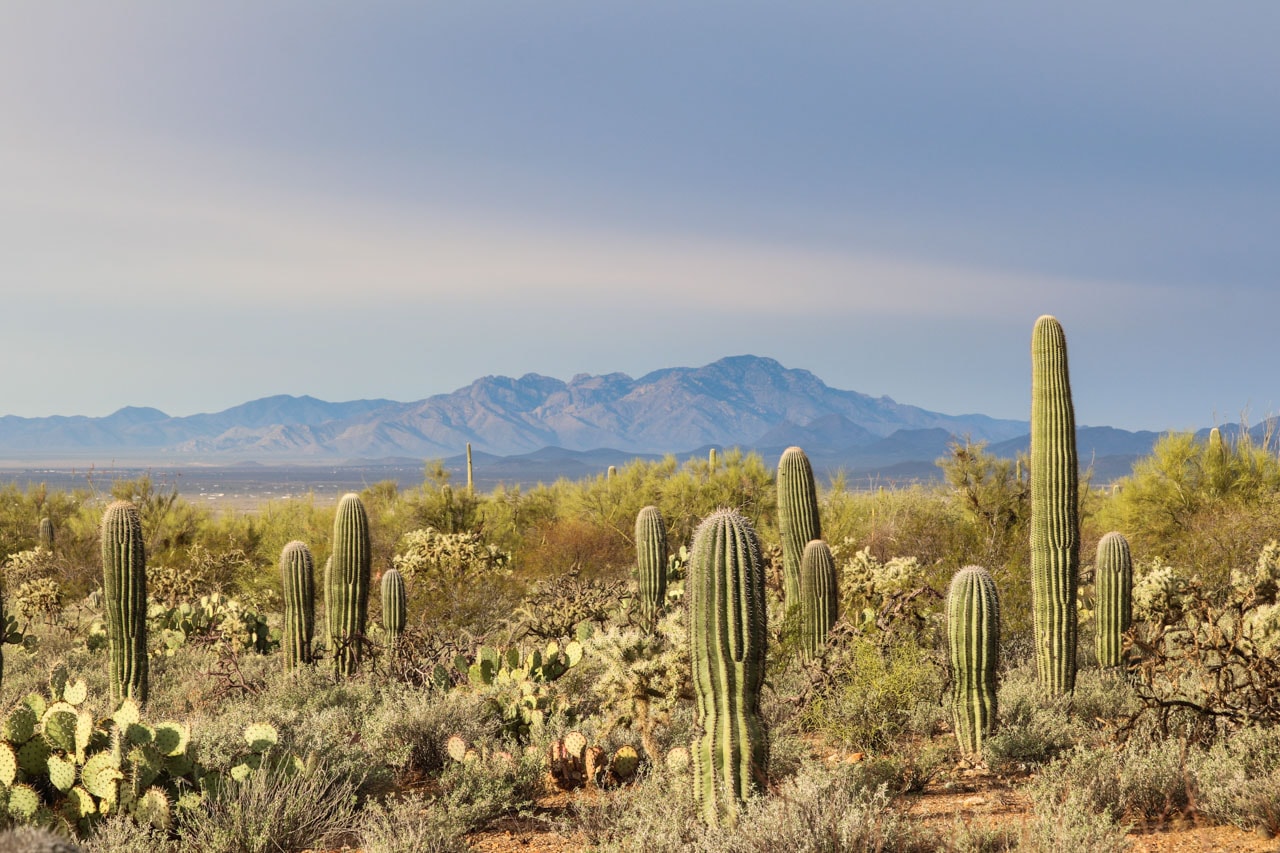
This blog post about the top attractions in Saguaro National Park contains affiliate links. You can read more about our Terms of Use / Disclosure here.
Sentinels of the Desert
The largest cactus species in the U.S., saguaros are native to the Sonoran Desert and you can only find them in a small part of the country. Saguaro National Park is by far the best place to see and learn about them.
Some saguaros are truly enormous, rising up to 50 feet (15 meters) tall. They’re literally cacti that are as large as trees. (Because they’re filled with water, they’re also much, much heavier than trees).
Even if you (think you) know them from Western films and photos, seeing a towering saguaro in person is a humbling experience.
Because of their human-like appearance, saguaros have played an important role in local Native American folklore for many millennia. There are several creation stories that involve saguaros, usually with humans who turn into a saguaro.
When you see a saguaro in real life, it’s not difficult to imagine them waving, greeting and bowing—performing human activities.
Each saguaro is and looks different, too, said to have its very own personality. Additionally, the fruits of the saguaro are an important staple in the local diet.

As you’ll now realize, this park is all about these majestic plants. Basically all the Saguaro National Park activities I’ll talk about below have something to do with the saguaro cactus.
Saguaro National Park West vs East: Two Different Districts
Saguaro is a super-easy park to visit. It consists of two different districts, which essentially sandwich the city of Tucson, Arizona, which is home to a major airport. From downtown Tucson, it’s only a short drive to both areas.
In this post, for the sake of a clearer overview, I’ll divide the best things to do in Saguaro National Park into the two districts:
- Tucson Mountain District (TMD) or Saguaro National Park West
- 24,498 acres (99 km2)
- 5-mile unpaved scenic drive
- 43 miles (69 km) of hiking trails
- No camping
- 5 picnic areas
- Rincon Mountain District (RMD) or Saguaro National Park East
- 66,947 acres (271 km2)
- 8-mile paved scenic drive
- 128 miles (206 km) of hiking trails
- 6 backcountry campgrounds
- 2 picnic areas
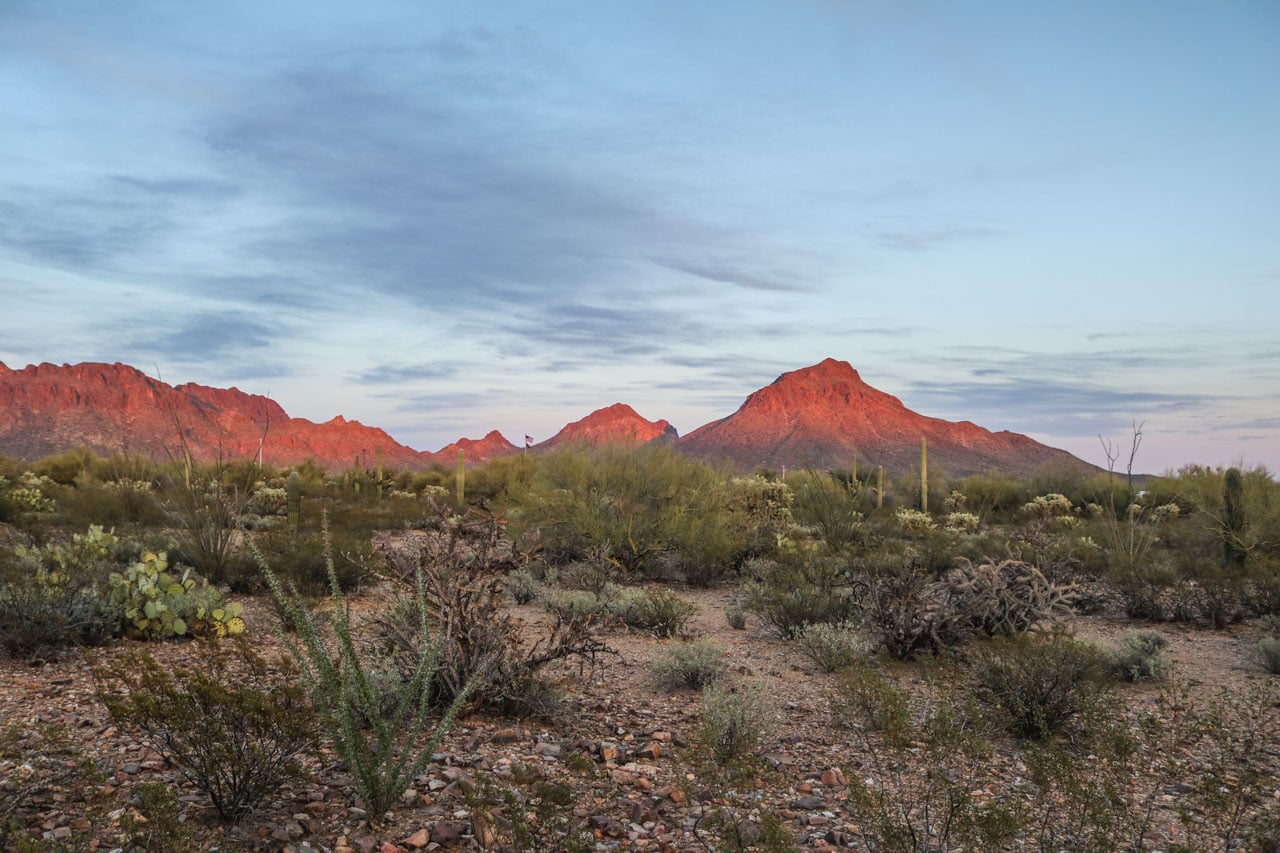
What Is the Difference Between Saguaro National West and East?
Now, you might wonder what the difference between Saguaro National Park West (Tucson Mountain) and Saguaro National Park East (Rincon Mountain) is. The answer is: a lot.
The western district is much younger and smaller than its eastern counterpart. Established in 1994, when Saguaro officially changed from a national monument to a national park, this is where you’ll find the densest concentration of saguaros, as well as younger saguaro forests.
Because of its lower elevation, the landscape is made up of rocky ridges and desert grasslands.
The eastern part of Saguaro National Park, on the other hand, features the oldest saguaro forests, which includes higher individual saguaros on average.
Several decades older than west Saguaro National Park, this district is also much higher in elevation. In addition to the characteristic saguaro forests, it’s home to pine-oak woodlands and mixed conifer forests.
Generally speaking, the Tucson Mountain District is more “visitor-friendly” than the Rincon Mountain District, which is a lot larger, more rugged, more inaccessible, and only has one short loop road.

10 Fun Things to Do in Saguaro National Park
There are Saguaro National Park attractions in both districts. Don’t limit your visit to just one! You kind of have to visit both to get a full sense of what this park (and the greater region) is all about.
I recommend starting your Saguaro National Park visit in the Tucson Mountain District, though. That’s where we’ll begin this overview of things to do in Saguaro National Park, too.
What to Do in Saguaro National Park Tucson Mountain District (West)
Get a First View of the Cactus-Dotted Landscape from Gates Pass Overlook

Although this is not within the national park, it’s still a mention-worthy point of interest. The most direct way from Tucson to Saguaro National Park West is the Gates Pass Road, which crosses the Tucson Mountains.
It lies in Tucson Mountain Park, which borders Saguaro National Park to the south and is managed by the Pima County Parks Commission.
At the Gates Pass Overlook, high up in the Tucson Mountains, there’s a great view of the desert plains below, dotted with saguaros. Facing west, this is also a fantastic spot to watch the sunset.
Visit the Red Hills Visitor Center
I always recommend starting any national park visit at the visitor center. The Red Hills Visitor Center is the park’s largest visitor center.
There, you’ll find a wheelchair-accessible trail, all park information you could possibly want, and the classic national park introductory film.
Don’t forget to pick up a Saguaro National Park map and newspaper.
Drive the Bajada Scenic Loop

There are few roads through the Tucson Mountain District, but the Bajada Scenic Loop is without a doubt the most beautiful one. This is an unpaved road of graded gravel that loops through the heart of the district for 5 miles (8 kilometers).
You don’t need four-wheel drive or high clearance to drive on this road—a simple two-wheel-drive sedan will do just fine. This beautiful gravel road is also open for mountain biking.
There are a couple of picnic areas, viewpoints and trailheads on this loop, which makes for a really fun introduction to the park. Valley View is especially worth mentioning for its amazing panoramic view of the saguaro-filled desert.
Additionally, Signal Hill is one of the top attractions in Saguaro National Park, too.
See Petroglyphs at Signal Hill
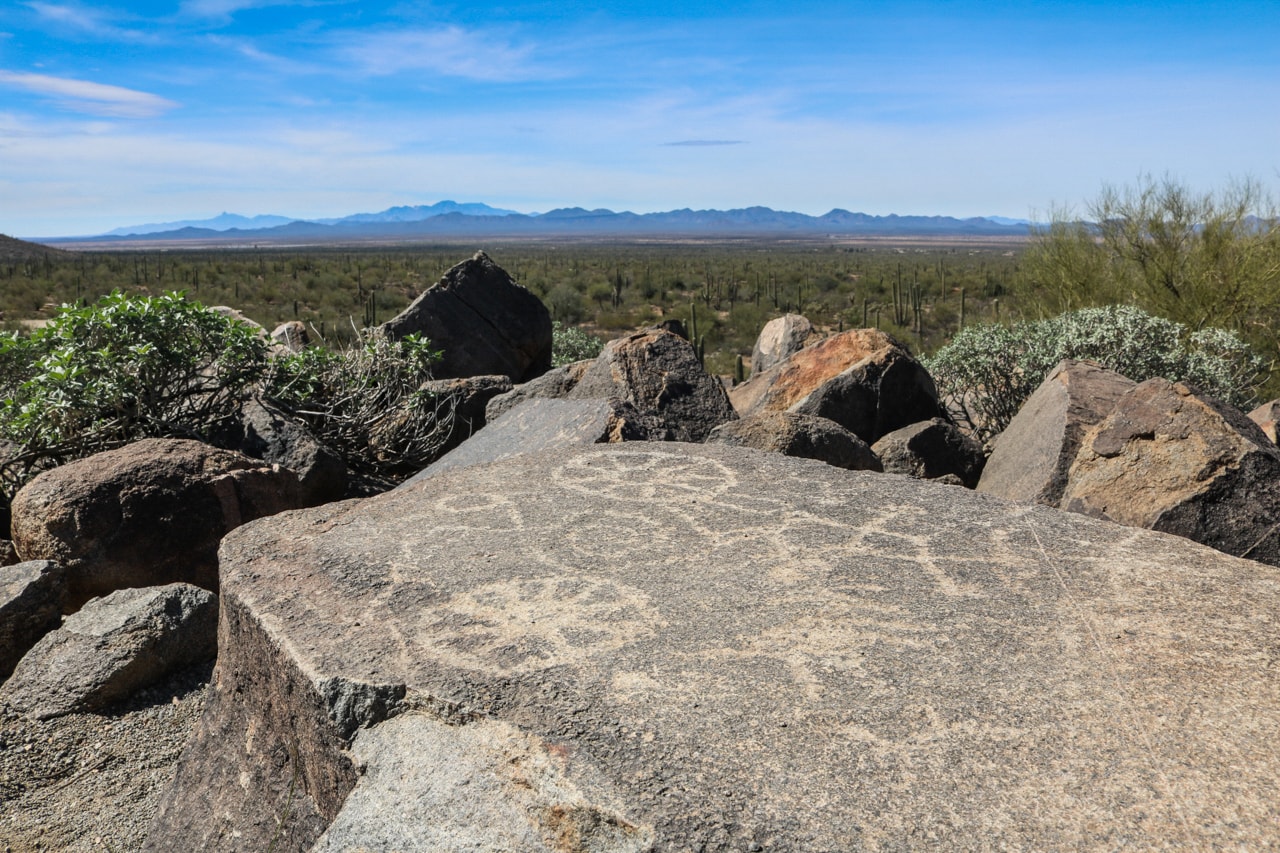
Signal Hill on the north side of the Bajada Scenic Loop is a great place for a picnic. Just north of the picnic area is the Signal Hill Petroglyph Site, which you can access via a short and easy hiking trail.
More than 200 Native American petroglyphs cover the top of the hill, dating from 550 to 1550 years ago.
You’ll also find petroglyphs, a type of ancient rock art, in other southwestern American national parks. Examples are Mesa Verde National Park in Colorado, Capitol Reef National Park in Utah and Petrified Forest National Park in northeastern Arizona.
Hike the King Canyon Trail to Wasson Peak

My personal favorite hike in Saguaro National Park is the 9-mile (14.5-kilometer) round-trip to Wasson Peak via the King Canyon Trail. With its 4,687 feet (1,429 meters), Wasson Peak is the highest mountain in the Tucson Mountains. The views, needless to say, are unparalleled.
The parking area and trailhead are directly across the road from the Arizona-Sonora Desert Museum, which is also worth visiting if you have some spare time.
Camp at the Gilbert Ray Campground
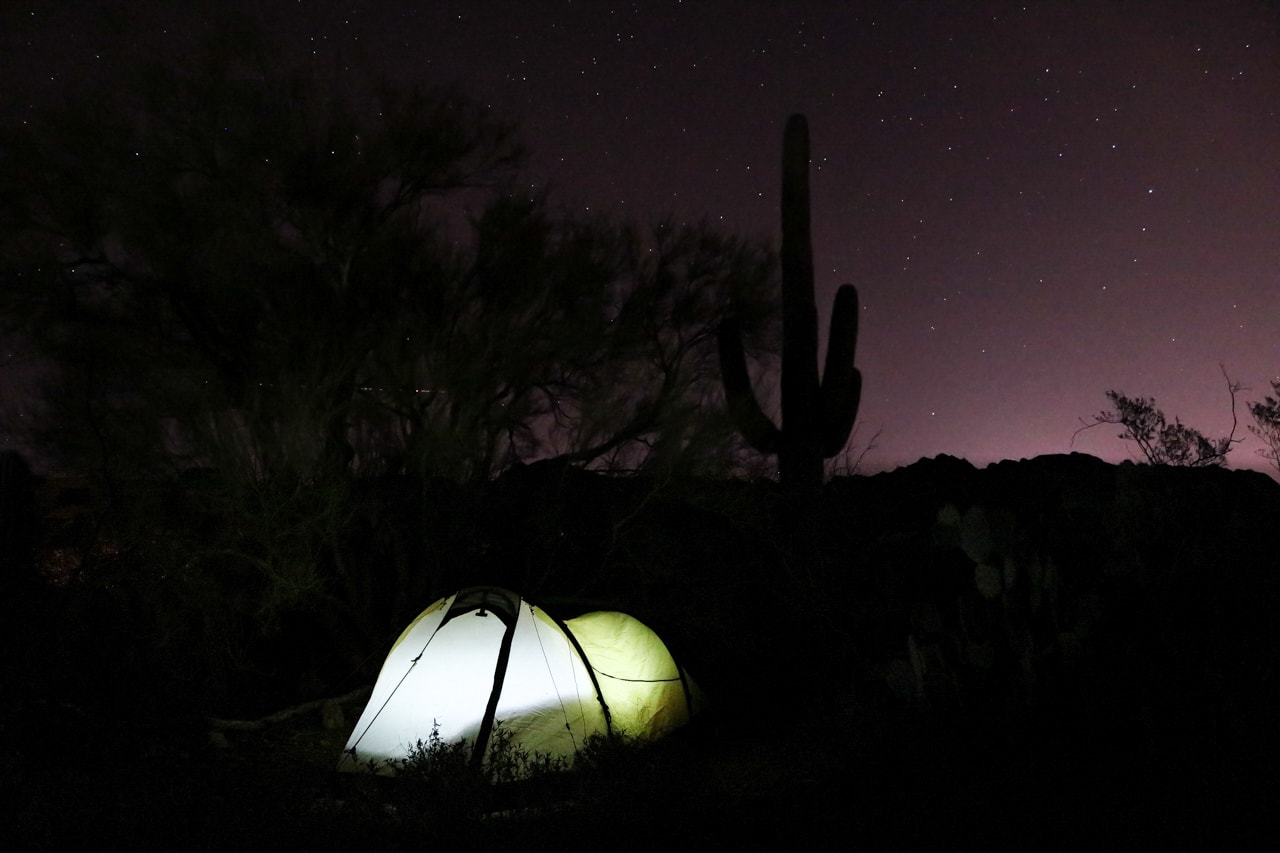
Located in the heart of Tucson Mountain County Park, a nice drive south of the national park’s southern boundary, Gilbert Ray Campground is by far the best campground near Saguaro National Park West.
It’s also basically the only developed campground anywhere near the park, both west and east.
Although you’ll technically not be inside the national park, you won’t notice any difference in scenery. You’ll sleep among tall saguaros and get to enjoy a beautiful star-peppered night sky. As far as campgrounds in or near national parks go, this is one of my all-time favorites.
Itinerary-wise, I recommend spending your first day in Saguaro National Park in the Tucson Mountain District, spending the night at Gilbert Ray Campground.
Get up early for sunrise and head toward the Rincon Mountain District on day two.
What to Do in Saguaro National Park Rincon Mountain District (East)
Drive the Cactus Forest Scenic Loop

The easiest sightseeing at Saguaro National Park is on the Rincon Mountain District’s Cactus Forest Loop Drive.
This paved 8-mile (13-kilometer) road offers access to various trailheads, overlooks and beautiful views. It runs through a large saguaro forest home to many of the park’s tallest cacti.
In addition to being a wonderful drive by car, the Cactus Forest Scenic Loop is also open to road cyclists. Although it’s not the longest of roads, it’s undeniably beautiful.
This very loop is why I included Saguaro National Park in my list of the best national parks for road cycling.
Hike the Mica View and Loma Verde Trails
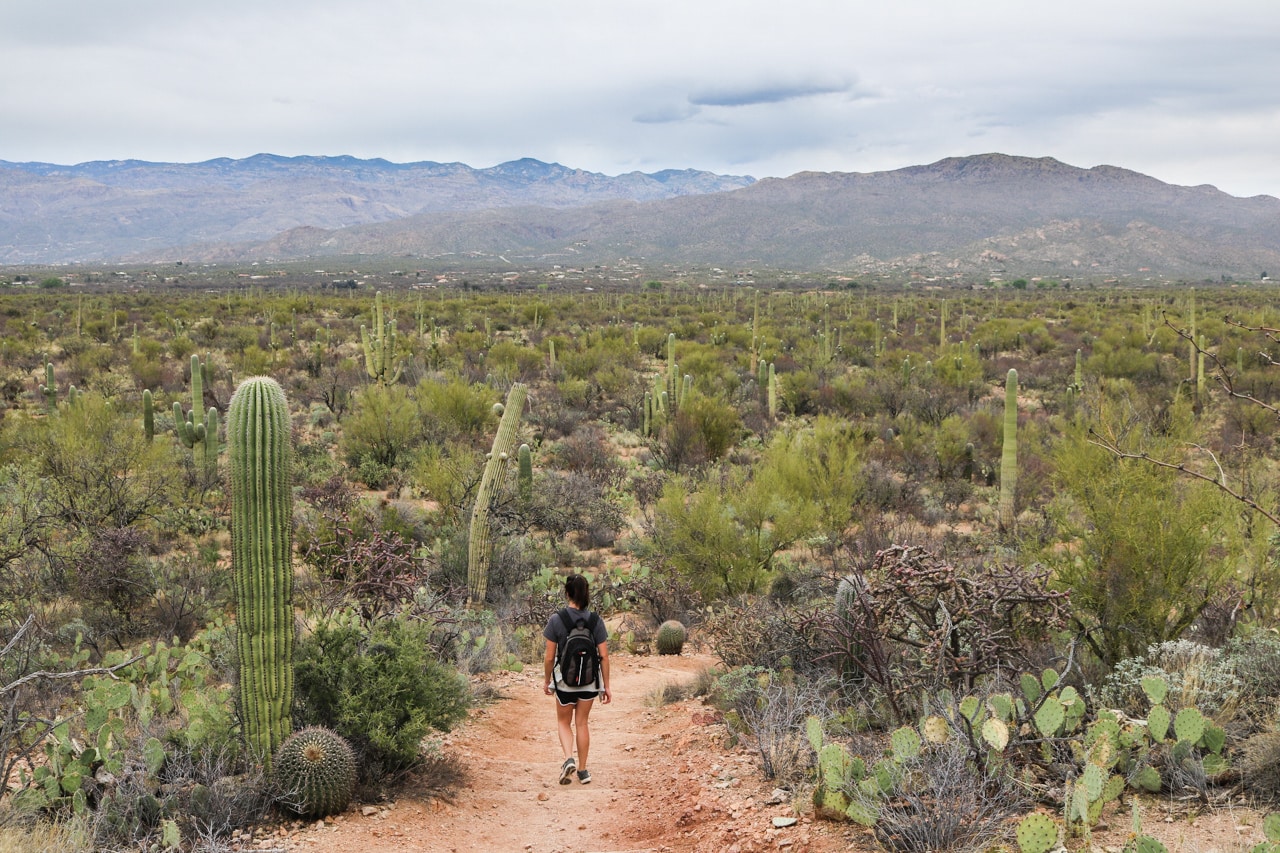
A maze of hiking trails lies to the north of the Cactus Forest Scenic Loop. The two main trailheads in this area are Mica View and Loma Verde, both offering access to towering saguaro forests and numerous other trails.
There’s no set distance for these Saguaro National Park East trails. You can wander around as you please, going as far as you want: the numerous interconnected trails allow you to create your very own hike.
Whether you stay near or go far, I guarantee you’ll have a ton of fun exploring this part of the park.
Saguaro National Park Activities You Can Do Anywhere in the Park
Enjoy the Beautiful Spring Wildflowers

Saguaro National Park is home to a huge number of plant species. This is because of the large elevation changes between the two districts, which creates various life zones. There are about 1,400 plant species in the Rincon Mountain District and 400 in the Tucson Mountain District.
Many of those plants are flowering plants. Especially the desert plants, cacti and succulents grow beautifully colorful flowers in spring. This includes the saguaros, too.
From late-February through June, this is one of the top national parks for wildflowers in America. These gorgeous wildflowers are one of the greatest seasonal Saguaro National Park attractions.
Take a Photo Next to the Largest Saguaro Cactus You Can Find
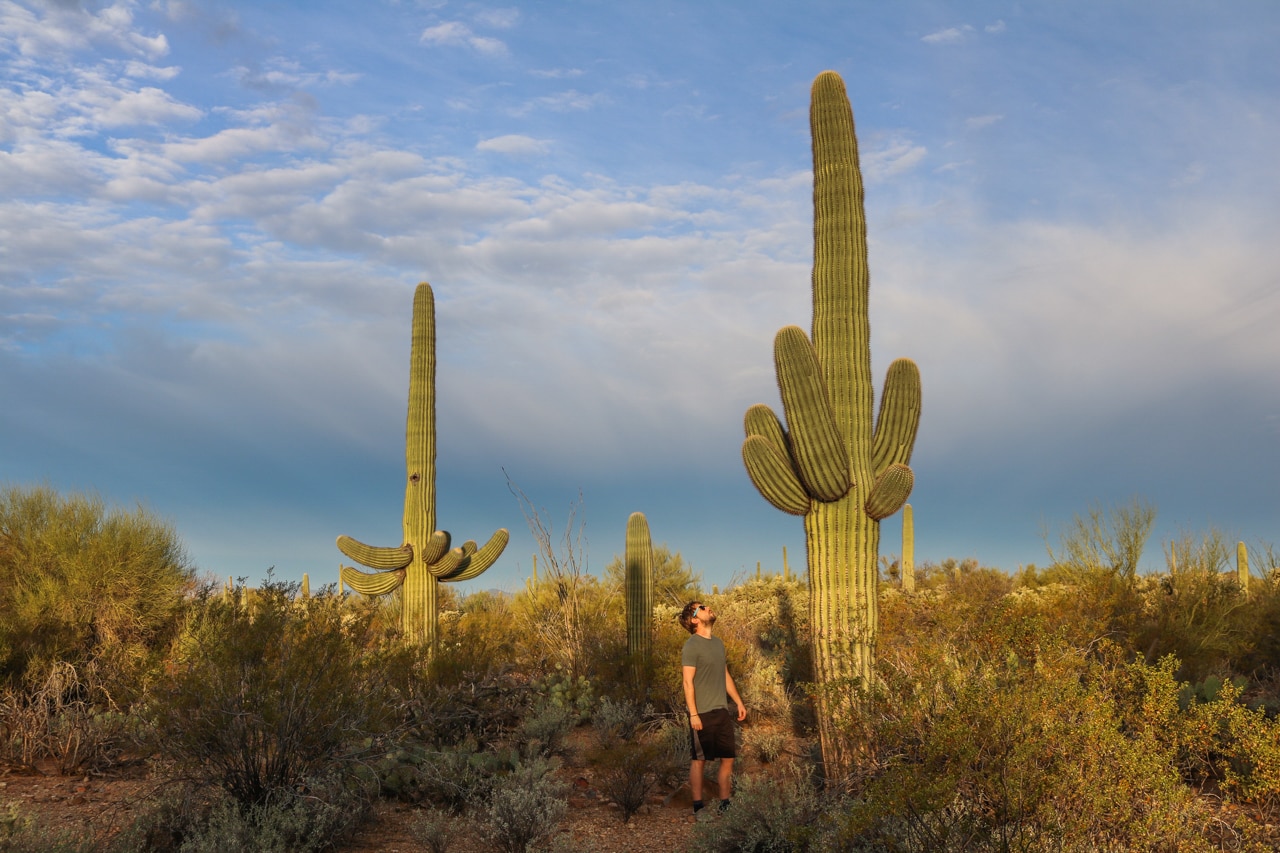
When you think you’ve found the tallest saguaro in Saguaro National Park, I assure you you’ll come across a taller one later. It’s a fun game to try and find the biggest cactus in the park.
Take a photo of yourself or your friend, partner, kid or family member to really puts its height into perspective. You can do this on most trails in Saguaro National Park.
Saguaro National Park Visitor Information & Tips
- Tucson Mountain District is open to vehicles every day from sunrise to sunset.
- Rincon Mountain District is open to vehicles every day from 7 a.m. to sunset.
- Hikers and cyclists can enter the park at any time.
- The Saguaro National Park visitor centers in both districts are open every day, except on Thanksgiving and Christmas, from 9 a.m. to 5 p.m.
- Entrance fees vary depending on how you enter the park. You can find current fees here. If you’re visiting more national parks, maybe on an Arizona national parks road trip, I strongly recommend getting an annual America the Beautiful National Parks Pass, which costs $80.
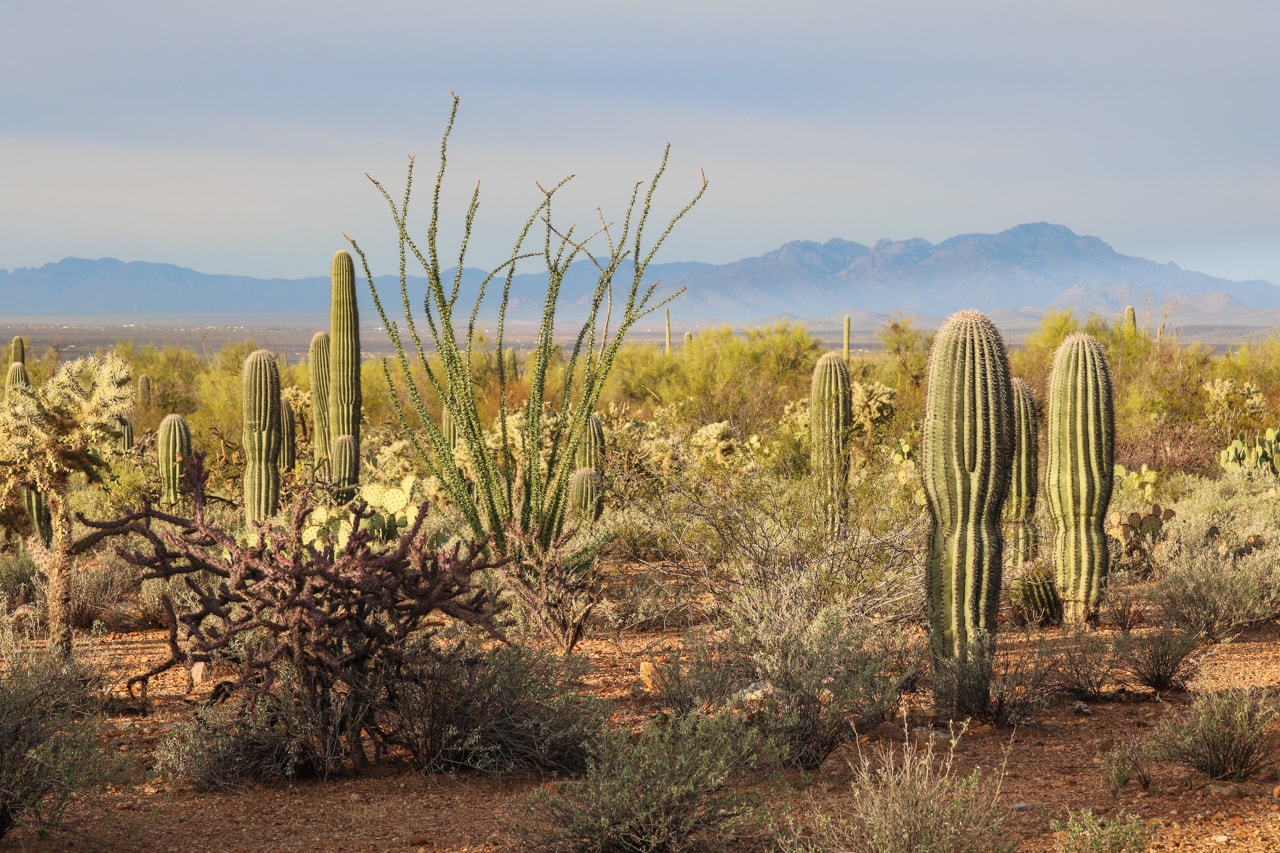
Where to Stay in Tucson
There are plenty of things to do in Tucson, such as the Pima Air & Space Museum, the Old Tucson Studios and various awesome Mexican restaurants.
Of course, for nature lovers, Saguaro National Park is the place to be, but Tucson is so convenient that you might want to stay there during your visit. There’s no developed accommodation in Saguaro National Park anyway.
Campgrounds
Besides backcountry campsites, there are no developed places to stay in Saguaro National Park.
The Rincon Mountain District with its 6 backcountry campgrounds is the only area where camping in Saguaro National Park is allowed. None of them are accessible by vehicle. You can find more information on this page.
If you do want to camp and enjoy some (necessary) facilities, however, consider parking your RV or pitching your tent at the awesome Gilbert Ray Campground (see above), a short drive south of the Red Hills Visitor Center.
It’s just south of the Tucson Mountain District boundary. I can’t imagine a better place to stay.
Hotels
For more luxury, Tucson has all kinds of hotels, B&Bs and motels. Located in between both districts, the city is a great base to explore Saguaro National Park. You’ll have to miss out on the desert camping experience, though!
Alternatively, you can also find plenty of Airbnbs in Tucson.
Saguaro National Park FAQs
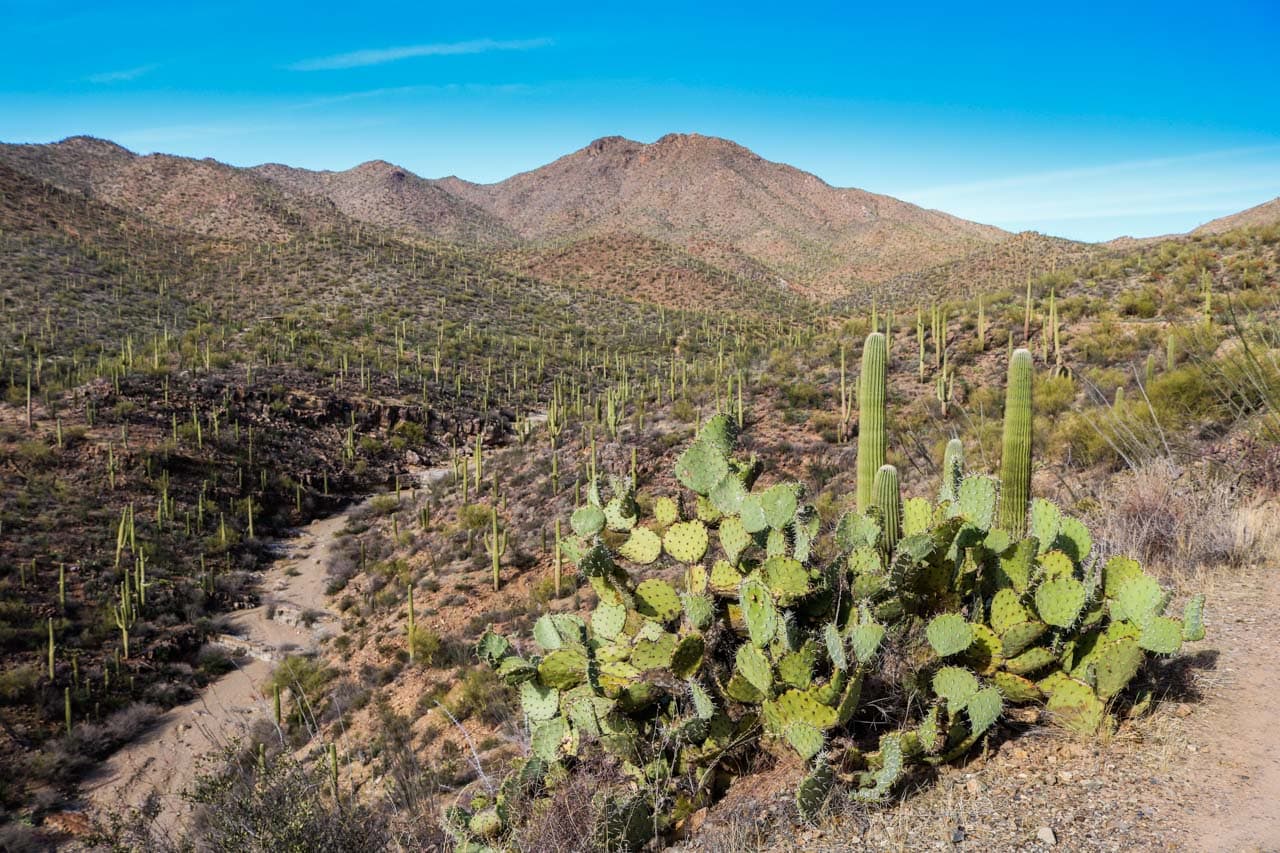
When Do Saguaros Bloom?
Generally, the peak saguaro flowering season is late-spring, roughly from late-April to the end of June. Other wildflowers and desert plants start blooming as early as late-February.
How Do You Pronounce Saguaro?
How to pronounce saguaro is a very common question among park visitors. I didn’t know how to correctly say the word either before visiting the park. It’s pronounced “sa-WAH-ro”.
How Old Do Saguaros Get?
Many saguaros grow 150 to 175 years old, so they’re definitely hardy and persistent plants. Once a saguaro is 125 years old, it’s considered an “adult”.
They’re also exceptionally slow growers. In the first 8 years of its life, a saguaro grows no more than 1 to 1.5 inches (2.5 to 3.8 cm).
A couple of quick facts to help you determine roughly how old a saguaro might be:
- Saguaros don’t start flowering until they’re at least 35 years old.
- Branches or arms don’t appear until a saguaro is 50 to 70 years old. Saguaros in areas with less precipitation might not get arms until they’re 100 years old.

What Is the Best Time to Visit Saguaro National Park?
Considering this is a park in the middle of the southern Arizona desert, visiting in summer is not encouraged. Temperatures above 100˚F (40˚C) are not unusual then.
You’ll find the best conditions for hiking, cycling and other exploration from fall through spring.
I recommend visiting this national park in spring because that’s wildflower season in Saguaro National Park and temperatures are still comfortable. March, April and May are typically the optimal and most beautiful months to visit the park.
How Many Days in Saguaro National Park?
To properly explore Saguaro National Park, you need at least two days, one full day in each district.
How Long Is the Drive Between the Two Saguaro National Park Districts?
Located on opposite sides of Tucson, the two districts are about 30 to 45 minutes by car apart. Since you’ll basically have to drive through the Tucson city center, the exact travel time depends on traffic conditions.
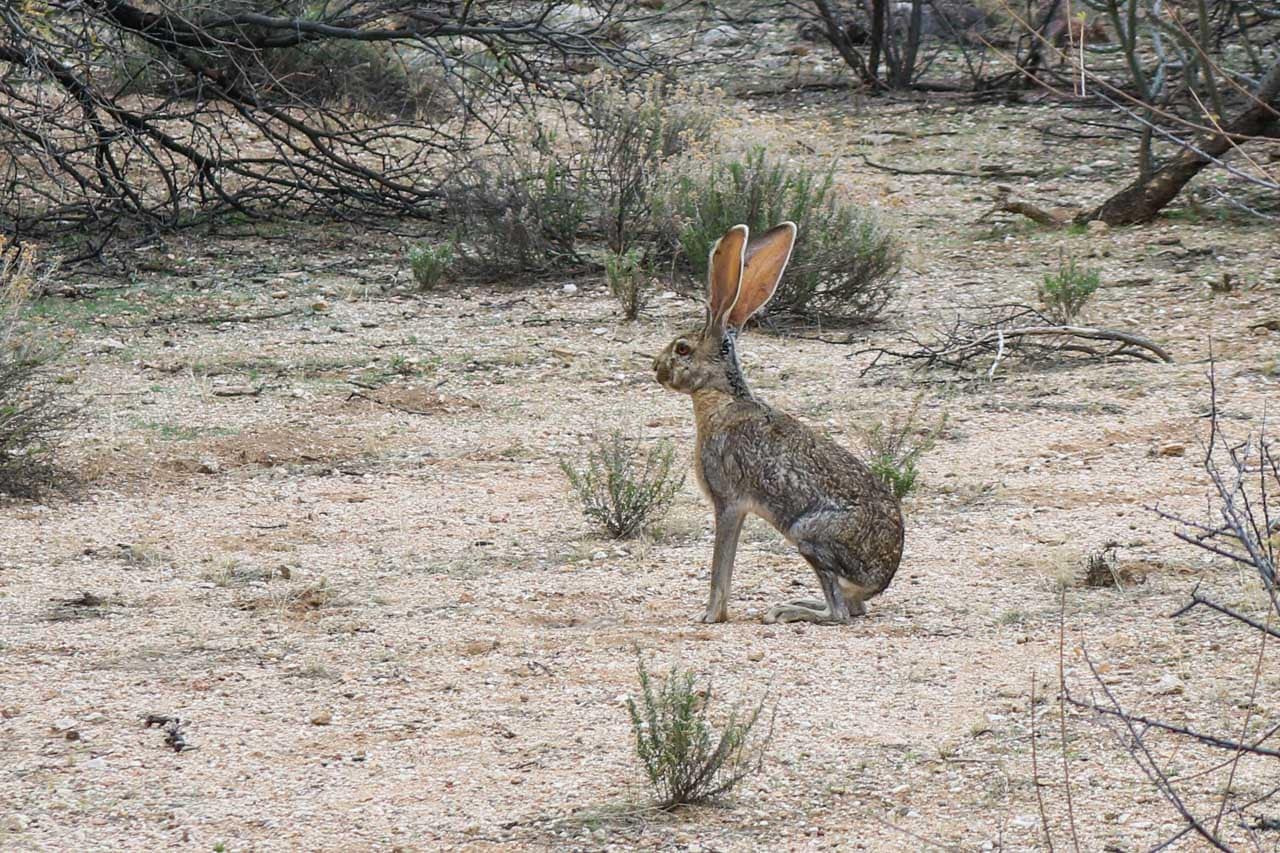
What Are Common Wildlife Sightings in the Park?
It’s not because this is a desert environment that there aren’t any animals in Saguaro National Park.
In fact, just like other desert parks like Death Valley and Joshua Tree, Saguaro is home to lots of different animals. Although I didn’t mention it above, wildlife and bird watching are among the most fun things to do in Saguaro National Park.
You’ll find many typical desert species here, including regularly spotted animals like horned lizards, Gila monsters, roadrunners, coyotes, jackrabbits and collared peccaries, also known as javelinas.
The higher, forested areas of the Rincon Mountains are home to white-tailed deer and black bears, too.
During my two-day visit, I saw a couple of coyotes and a few peccaries. All those sightings were at dusk.
Should I Worry About Rattlesnakes?
While there are rattlesnakes in Saguaro National Park—Arizona is actually the state with most rattlesnake species in America—that shouldn’t be a major concern.
Just make sure you never put your hands or feet where you can’t see and you’ll be alright. Pay attention to your surroundings while hiking. Never leave the trail. If you do hear a rattle, I talk about what to do during a rattlesnake encounter in this blog post.
It may receive a fraction of the visitors that its northern Arizona neighbor Grand Canyon National Park gets, but I strongly encourage you to consider visiting Saguaro National Park as well if you’re in the area.
As you can see, there are plenty of great Saguaro National Park attractions. Additionally, just because it lies on both sides of Tucson, it’s amazingly accessible and every possible tourist facility is readily available.
Do You Have Any Other Tips for Things to Do in Saguaro National Park? Please Share Them With Everyone in the Comments Below!
Attractions & Activities in Other Southwestern U.S. National Parks
- Arches National Park Attractions
- Canyonlands National Park Attractions
- Capitol Reef National Park Attractions
- Death Valley National Park Attractions
- Grand Canyon National Park Attractions
- Great Sand Dunes National Park Attractions
- Joshua Tree National Park Attractions
- Mesa Verde National Park Attractions
- Petrified Forest National Park Attractions
- Pinnacles National Park Attractions






